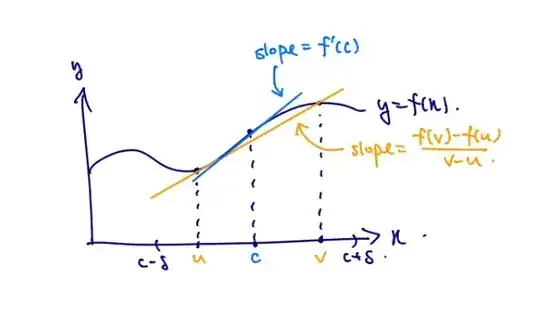Can anyone please picture the Saddle Lemma in Introduction To Real Analysis (2011 4 ed) by Robert G. Bartle & Donald R. Sherbert, Section 6.1, Exercise 17, p 171? I'm not asking proofs.
Let $f \colon I \to \mathbb{R}$ be differentiable at $c \in I$. Establish the Straddle Lemma. Give $\varepsilon > 0$ there exists $\delta (\varepsilon) > 0$ such that if $u, v \in I$ satisfy $c-\delta(\varepsilon)<u\leq c \leq v < c+\delta(\varepsilon)$, then we have $\left\lvert f(v) - f(u) - (v-u)f^\prime(c) \right\rvert \leq \varepsilon (v-u)$.
[Hint: The $\delta(\varepsilon)$ is given by Definition 6.1.1. Subtract and add the term $f(c) - c f^\prime(c)$ on the left side and use the Triangle Inequality.]
